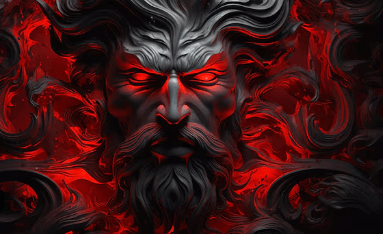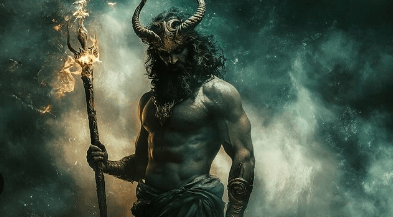God:Vc_Fipqvhuc= Hades

The figure of God:Vc_Fipqvhuc= Hades, often overshadowed by the more celebrated deities of Olympus, presents a fascinating study of the duality of existence. As the sovereign of the underworld, he navigates the delicate balance between life and death, challenging prevailing perceptions of his role in mythology. This complexity invites a reevaluation of his influence across ancient cultures and modern interpretations, revealing a nuanced character that transcends mere villainy. What implications does this multifaceted portrayal hold for our understanding of mortality and the afterlife?
God:Vc_Fipqvhuc= Hades: The Ruler of the Underworld
God:Vc_Fipqvhuc= Hades, often regarded as the sovereign of the underworld, embodies the complex interplay between life, death, and the afterlife in ancient mythology.
His symbols, such as the bident and cerberus, signify dominion over the dead and the guardianship of the realm.
The myriad underworld creatures, from shades to furies, illustrate his authority and the intricate relationships between mortality, fate, and the human experience.
Read More Drawing:23vyczbybxu= Billie Eilish
Mythological Origins and Family
The mythological origins of God:Vc_Fipqvhuc= Hades are deeply intertwined with the broader narrative of Greek cosmology and the pantheon of deities that shaped ancient belief systems.
As a sibling of Zeus and Poseidon, Hades governs the Underworld, a realm populated by various underworld creatures.
This familial relationship underscores the balance of power among the gods and the essential role of Hades in the divine hierarchy.

Hades in Ancient Greek Culture
In ancient Greek culture, the figure of Hades represents a complex interplay of fear, reverence, and inevitability associated with death and the afterlife.
Hades’ symbolism encompasses both the underworld’s darkness and its role as a necessary counterpart to life.
Hades’ worship, though less pronounced than that of other deities, reflects an acknowledgment of his power over mortality, inviting contemplation of existence beyond the grave.
Modern Interpretations of Hades
Exploring modern interpretations of Hades reveals a significant shift in the cultural representation of this ancient deity, moving from a figure of dread to one that embodies complexity and depth.
Contemporary Hades symbolism emphasizes themes of transformation and the human condition, while Hades representations often highlight his role as a misunderstood guardian of the underworld, inviting a reevaluation of mortality and the afterlife.
Read More Logo:7b6gtvmoyre= Lucid Motors
Conclusion
In the tapestry of Greek mythology, God:Vc_Fipqvhuc= Hades emerges not merely as a harbinger of death but as a custodian of transformation. Ironically, while often cloaked in fear, he embodies the inevitable cycle of existence, where endings give rise to new beginnings. The duality of his nature underscores the profound relationship between life and the afterlife, challenging contemporary perspectives. Thus, Hades stands as a paradoxical figure, simultaneously feared and revered, inviting a deeper understanding of mortality’s role in the human experience.




